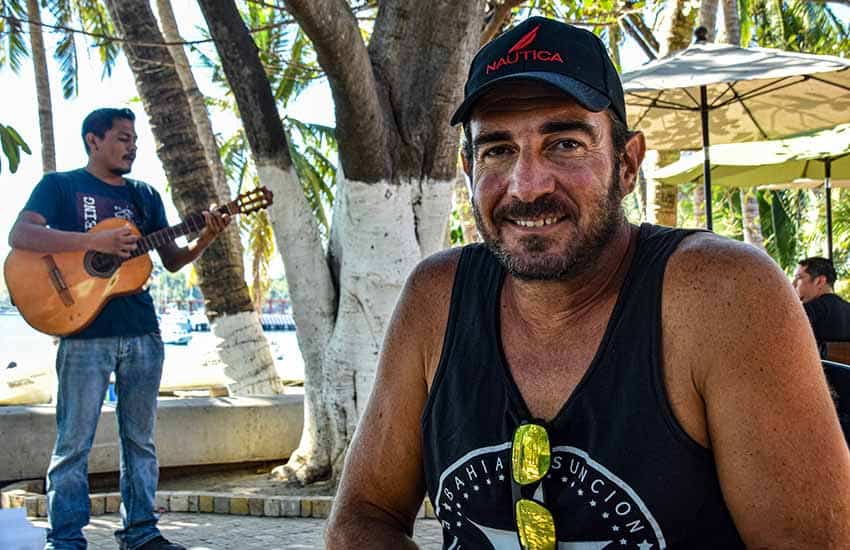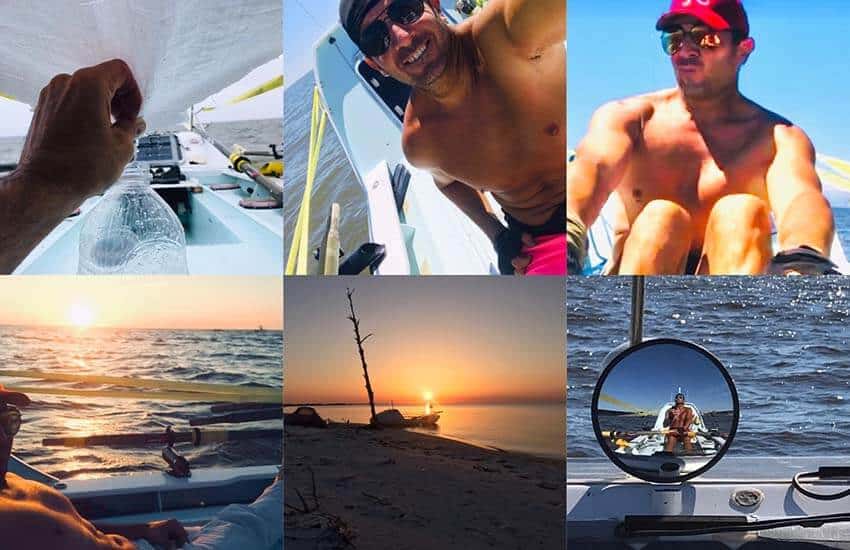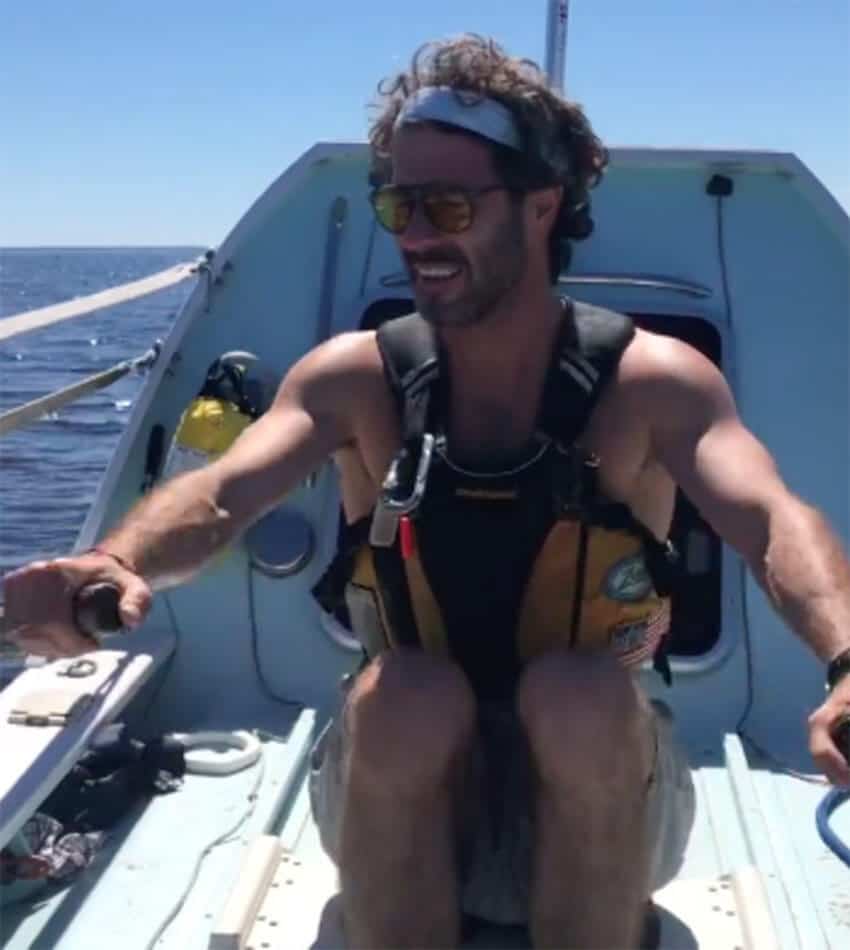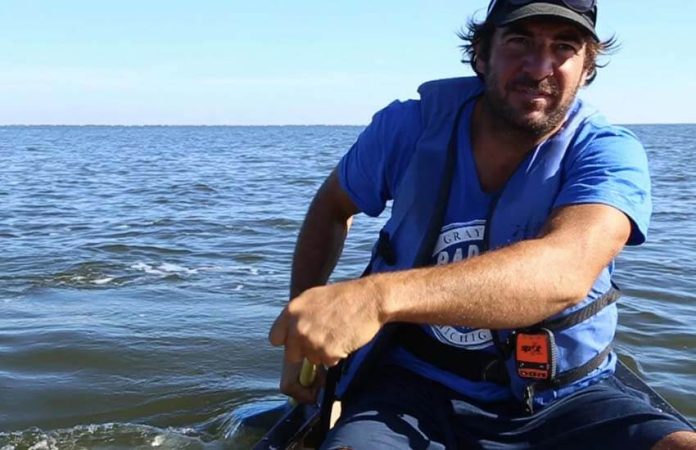When Aaron Carotta first picked up a canoe paddle, he had no idea what he was doing. But that didn’t deter him from embarking on a 5,000-mile journey down the Missouri River — North America’s longest river system — in a beat-up old canoe and a heavy plastic oar no experienced paddler would ever use.
“It started with a cancer diagnosis in 2008. It was my wake-up call,” he explained.
Having since conquered a solo 232-day journey down North America’s longest river system with just $37 in his pocket, limited supplies of mostly oatmeal and Spaghetti-Os and zero experience, Carotta and his canoe have expanded their horizons and decided to undertake an even bigger journey in 2021.
Carotta is making a solo worldwide trip in his rowboat, one that will take him from 3–5 years and that he’s documenting through a variety of media online in the hopes of educating viewers about the lives of people around the world.
Oh, and he also hopes to break a Guinness world record for the longest solo journey by canoe or kayak. Currently the record is 3,462.89 miles by Marcin Gienieczko of Poland.

Not long ago, when friends told me that Carotta’s rowboat Smiles had anchored in the Bay of Zihuatanejo to repair a rudder, I knew I had to meet him. The burning question I had for him when I caught up with him in a sidewalk café in Zihuatanejo was why?
A failed relationship, along with his health issues, seemed to be the motivating factor for transforming himself into his current public persona, Adventure Aaron. “I believe in the power of this tiny rowboat,” Carotta said, “for the future motivation it can offer to my fellow friends here seeking their own in life, by simply rowing their boat.”
Carotta talked a lot about his spirituality as being a personal thing for him — not something he wanted to push on others, but more like a journey of finding his God. He started the journey as part of his spirituality. “It is a personal thing and a quest — not a mission to save the world. Humanity, communication and God are the three elements that define my life.”
However, Carotta does have a goal in mind that is bigger than himself: he is recording his worldwide journey in a variety of media – from social media to online video posts to podcasts to TV interviews and more, in part so that he can show his viewers how average people around the world live their lives. He calls this project See Level.
“We live in a world that’s influenced and polished in a way that makes it hard to know what’s actually going on out there,” he says on his fundraising page. “Not everyone in First World countries has the means or the knowledge to experience off-the-beaten paths in the world and personally connect with the communities there. They don’t know what other communities have or need in terms of food and supplies; they just go by what organizations tell them.”
Carotta’s plan besides everything mentioned above is to meet as many people as he can on his journey, and in some cases, hand out donations to random needy members he encounters in the communities he passes through. This is at least in part funded by patron donors, who contribute to his Fundrazr.com page.

He has had several wake-up calls since he first set off on his adventure. Four days after departing from Ensenada, he encountered real weather, with 25–30 knot winds. As he said on his Facebook page, “What got calm, got real — real quick.”
“Waking up at 3 a.m., feeling the winds coming, I stayed out for 20 hours on the oars,” he added.
Trouble also hit as he was coming down the Gulf of California. Blown off course and adrift at sea for days without food, Carotta found himself having to turn to his only source of food left in the boat, a live chicken companion named “Red.”
“It was so hard eating that chicken,” he said, “especially since I had already named him … At one point, I thought that I was going to die,” he remarked. “But it was a peaceful, almost blissful, feeling, and I wasn’t afraid. Not that I wanted to die, of course, but I was okay with it.”
He survived thanks to a concerned boater who had not heard from him in a while and notified Mexico’s Coast Guard. They came to his rescue with a food drop and help repairing his boat.
While in Zihuatanejo, Carotta found himself enveloped in the active marine society that this fishing village is famous for. Since leaving, he has passed through Acapulco, and on Wednesday, according to the tracker map on his website, he and Smiles were near the coast of Puerto Escondido.

Before he left Zihuatanejo, I asked him what was next for him after rowing around the world. “I think I will experience a post-partum,” he said.
What was the solution, I asked him?
“Go get another adventure.”
- You can track Carotta’s continually updated progress via his online tracker.
The writer divides her time between Canada and Zihuatanejo.
